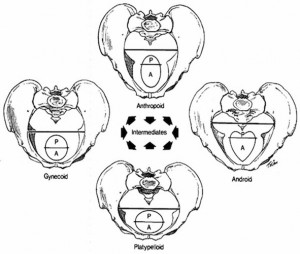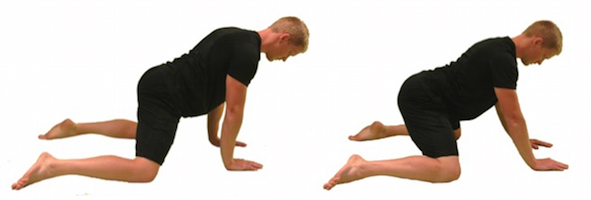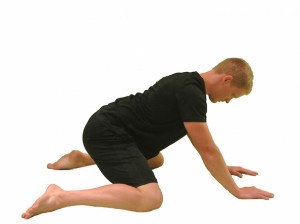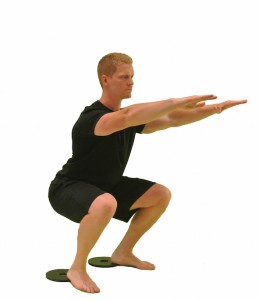Aside from the Daily Deep Squat Hold (bodyweight), you should avoid squatting to a point where you’re experiencing a posterior pelvic tilt or butt wink. It’s not a big deal when you do it without weight, but when there’s a bar on your back or front, it places the load directly on the base of your spine.
To determine when this occurs you can try doing a lightly-loaded or bodyweight squat in the mirror, or get on all 4’s with knees spread and try to sit back; like this:
You’ve gone too low when your spine is no longer flat and your butt attempts to tuck underneath. Like this:
Lack of depth usually stems from poor mobility (specifically in the ankles and hips), and a weak core or glutes. Many times, it’s that individuals are not engaging their core and glutes while squatting, which is why it’s a good idea to practice this while the weights are light and the movements basic.
Fortunately, your glutes and core will be getting stronger, and your overall hip and ankle mobility will improve as you progress through the various phases of 1% Fitness. If your ankle flexibility continues to let you down, try adding in some hard dorsiflexion (opposite of toe point) stretches prior to training, or consider elevating your heels with 2.5 or 5lb plate while squatting.
If after a few weeks, you’re still not seeing depth improvements, you may just not be a deep squatter…and that’s okay! Genetics come into play, and it could be anything from your femur length to your pelvic type.

Not all are good for squatting, or as Dr. Ryan DeBell puts it:
“There are narrow squatters and there are wide squatters. That may have nothing to do with tight muscles or “tight” joint capsules and have EVERYTHING to do with bony hip anatomy.”
Stay Lean!
Coach Mike
RELATED ARTICLES:
Hate Squatting? Embrace The Low Bar
Build a Better Butt - The 15 Best Glute Exercises
5 Exercises You Should Be Doing Daily (aka Lifestyle Movements)



